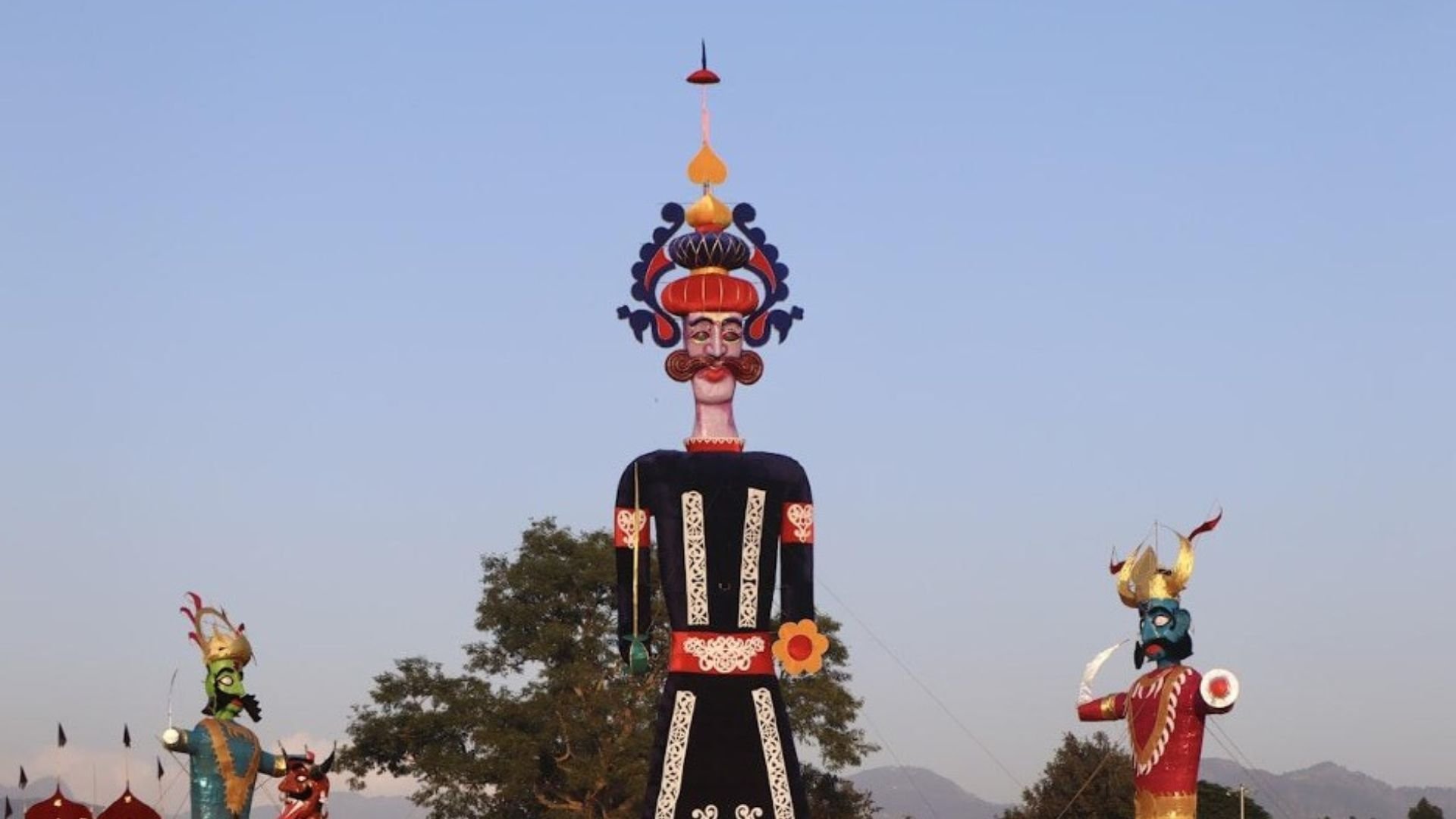Lifestyle
Artists Celebrate Tradition by Crafting and Burning Ravana Effigies

In a unique artistic tradition, Indian artists create intricate effigies of the demon king Ravana, only to set them ablaze during the Dusshera festival. This celebration symbolizes the victory of good over evil, aligning with stories found in ancient texts like the Ramayana. The practice of crafting and burning Ravana effigies has become a hallmark of Dusshera, particularly in regions like Bhubaneswar, where local artisans like Shobharani Mohapatra play a vital role.
Reviving an Artistic Tradition
The tradition of burning Ravana effigies dates back to 1948, when refugees from Pakistan introduced it to India. This relatively modern custom has rapidly embedded itself into Indian culture, with the effigies representing not only a mythological figure but also the broader battle between good and evil. Every year, celebrations culminate in the dramatic burning of these figures, drawing crowds and instilling a sense of community pride.
In Bhubaneswar, Shobharani Mohapatra, affectionately known as “Ravana mausi,” has dedicated over 40 years to this craft. Each year, she produces between 15 and 20 effigies, ensuring the festival’s vibrancy. Her journey began when local children requested a small effigy, which she made using bamboo, paper, and glue. Since that initial creation, she has found purpose in this art form, contributing significantly to the local celebration of Dusshera.
The Art of Effigy Making
Creating these effigies requires skill and dedication. Each figure is designed with intricate details, showcasing artistic flair while embodying the demon king’s character. Mohapatra’s process combines traditional methods with personal touches, making each effigy unique. Despite the effort put into crafting these beautiful artworks, the ultimate fate of the effigies is to be set ablaze.
Mohapatra describes her experience, stating that the act of burning the effigies is not one of loss but rather a celebration of her work and a reaffirmation of cultural values. “It redefines my purpose in life,” she shares. This sentiment resonates with many artists in the community, who take pride in their contributions, even as they prepare to see their creations go up in flames.
While the burning of the effigies may seem counterintuitive to some, it embodies a deeper cultural significance. This ritual serves as a reminder of the triumph of righteousness, encouraging people to reflect on their own lives and values.
The process of making and burning these effigies often goes unrecognized, yet it is essential to the fabric of Indian culture. Artists like Mohapatra illustrate the dedication required to maintain such traditions, which are crucial in connecting generations through stories and rituals.
As Dusshera approaches, communities across India prepare for the celebrations, with effigies of Ravana taking center stage. The commitment of artists not only ensures that this tradition continues but also enriches the cultural landscape, blending artistry with spiritual significance. The burning of Ravana serves as a powerful reminder that while evil may exist, it can be overcome, and the triumph of good will always prevail.
-

 World4 months ago
World4 months agoTest Your Knowledge: Take the Herald’s Afternoon Quiz Today
-

 Sports4 months ago
Sports4 months agoPM Faces Backlash from Fans During Netball Trophy Ceremony
-

 Lifestyle4 months ago
Lifestyle4 months agoDunedin Designers Win Top Award at Hokonui Fashion Event
-

 Entertainment4 months ago
Entertainment4 months agoExperience the Excitement of ‘Chief of War’ in Oʻahu
-

 Sports4 months ago
Sports4 months agoLiam Lawson Launches New Era for Racing Bulls with Strong Start
-

 World5 months ago
World5 months agoCoalition Forms to Preserve Māori Wards in Hawke’s Bay
-

 Health4 months ago
Health4 months agoWalking Faster Offers Major Health Benefits for Older Adults
-

 Lifestyle4 months ago
Lifestyle4 months agoDisney Fan Reveals Dress Code Tips for Park Visitors
-

 Politics4 months ago
Politics4 months agoScots Rally with Humor and Music to Protest Trump’s Visit
-

 Top Stories5 months ago
Top Stories5 months agoUK and India Finalize Trade Deal to Boost Economic Ties
-

 Health2 months ago
Health2 months agoRadio Host Jay-Jay Feeney’s Partner Secures Visa to Stay in NZ
-

 World5 months ago
World5 months agoHuntly Begins Water Pipe Flushing to Resolve Brown Water Issue









